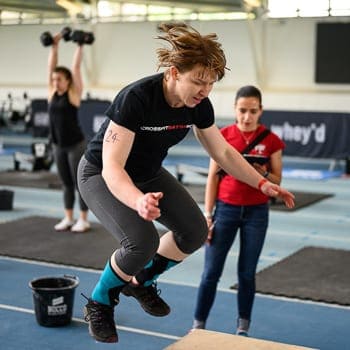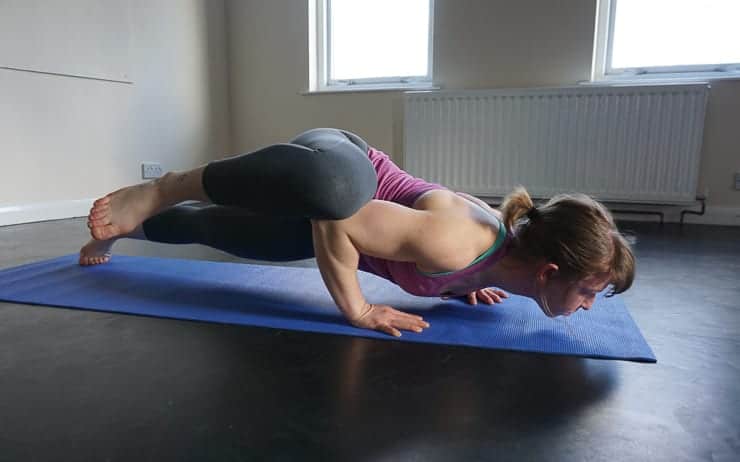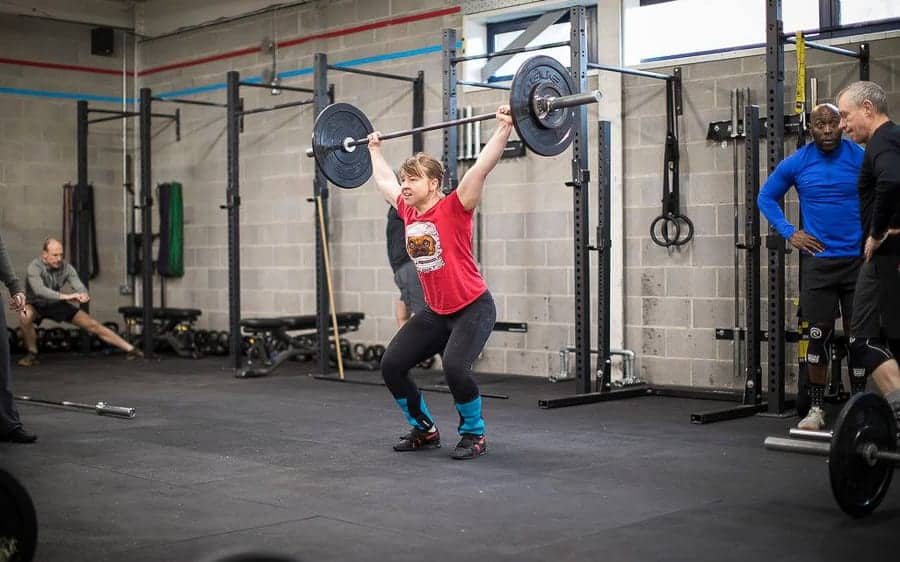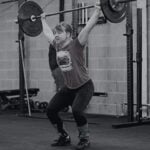Discovering CrossFit was a game-changer for me. It taught me I was much more capable than I thought. With any change in the body, the mind also changes and so this extended to all sorts of other areas of my life.
 I placed 11th in a pretty decent competition, I hit 210 lbs on my back squat, 195 lbs on my clean, and 300 lbs on my dead lift. I nailed pull ups and handstand push-ups. There was nothing I couldn’t do.
I placed 11th in a pretty decent competition, I hit 210 lbs on my back squat, 195 lbs on my clean, and 300 lbs on my dead lift. I nailed pull ups and handstand push-ups. There was nothing I couldn’t do.
My newfound confidence pushed me to make all sorts of other exciting changes like pursue acting at my university and chat with people I was previously too freaked out to make conversation with. It felt like a whole load of magic until… the overuse injuries started cropping up and everything plateaued. I didn’t know how to move forward. This is the stage where a lot of CrossFitters either:
- start looking for a magic programming formula, or
- do MORE, and a one hour gym session somehow turns into three hours of accessory work and a WOD.
At the time, these were the only two solutions I knew of. Though, I quickly realized that three hours is a hell of a long time to spend in the gym and chasing the best programming is only chasing a piece of puzzle.
Shifting My Mindset
My body was telling me that whatever I was doing and the volume I was doing it at wasn’t working.
So after a lot of humming and hawing and a small labrum tear in my shoulder (which I also addressed with loads of physio), I did the opposite of what was familiar and took a step back after I was cleared for movement.

Instead of increasing my days, I reduced them, instead of dedicating myself to a three hour session, I remained extra focused on an hour: dedicating myself equally to the work and rest. This, then, became the missing piece of the puzzle, which is now a HUGE part of my training—my mindset.
The mindset that had originally helped me achieve all my strength gains was great. It was a mindset that was ready to CRUSH and listen to dubstep and bounce around from movement to movement, but this mindset was not the right one to address what I needed to in order to get over my plateau:
- The cycle of injuries and aches and pains.
- Lack of control built through calisthenics and gymnastic skills.
Neither of these things was being adequately addressed by a mindset ready to CRUSH! Instead, I needed a mindset that was open to light, mindful movement.
Enter GMB.
Embracing GMB (and How That has Enhanced My CrossFitting)
 If you’ve been following GMB for a while, you know that “skip the kip” is one of their long-loved phrases, but as a CrossFitter, it was something I balked at.
If you’ve been following GMB for a while, you know that “skip the kip” is one of their long-loved phrases, but as a CrossFitter, it was something I balked at.
Nonetheless, I began working through Elements and, in the process, read some great articles on mindset like GMB’s autoregulation article, which taught me it was okay to have “bad” sessions, and what to do with them.
I learned that the foundation for long-term skill building is fewer reps that are controlled and precise and that working at a “scaled” level is an opportunity to master the basics.
I still do Elements as a part of my CrossFit warm-up and I am constantly coming back to mindset when approaching complex skill work. Here’s what that looks like practically in my sessions:
1. I now think about nailing the proper starting position
Don’t rush the start. Even if the movement seems ridiculously simple, setting up the proper way means that you’re in a position to perform the next piece right.
Look at everything, from top to bottom, and ask, where should my hands be, feet, spine, etc? What’s tightening? What’s staying loose and light? Where is my weight sitting now? Where will it need to go? This was a big thing that kept coming up for me during the GMB apprenticeship and it’s stayed with me since then.
2. I’ve learned to embrace horizontal progress
When working on any complex skill, oftentimes progress isn’t linear. Let’s say you’re working on a handstand.
This is how we often want it to go (linear progress):
- Month 1: I kick up to a wall.
- Month 2: I can now kick up on the floor.
- Month 3: I can now hold my handstand on the floor for 30 seconds.
- Month 4: Now I can walk upside down.
But this is how it usually goes (horizontal progress):

- Month 1: I learn how to kick up to a handstand against a wall. I sort of just launch my legs up, but I’m upside down!!!… Now what?
- Month 2: I learn that placing my hands one way is much more efficient than placing my hands a different way and I finally feel what my shoulders need to be doing (shoulders to ears, pushing the floor away).
- Month 3: I learn how to point my toes and squeeze my butt. Slowly my feet float away from the wall.
- Month 4: I learn how to kick up into a handstand without the wall but everything else has gone to shit. I’ve forgotten proper shoulder and hand positioning, but I am learning how my weight needs to shift in my hands.
These little shifts in understanding, forgetting, and re-understanding are important to note because if we miss them we may trick ourselves into believing we’re not making any progress.
3. When working on new skills, I use a timer instead of a rep scheme
 When I’m working on a new skill, I’ll set a timer for 20-30 minutes (10, if I’m tired) and pick 2-3 movement progressions to work on. I allow myself the freedom to order these movements however I want and take breaks as needed.
When I’m working on a new skill, I’ll set a timer for 20-30 minutes (10, if I’m tired) and pick 2-3 movement progressions to work on. I allow myself the freedom to order these movements however I want and take breaks as needed.
This is that autoregulation thing I was talking about!
Setting a timer forces you to assess your current level, take rest based on how you feel that particular day, and it relieves the pressure of having to hit a certain number of reps or sets, which can become mindless.
Reframing What Fitness Means to Me
Framing my fitness training as a learning process instead of another thing to crush means I can start to poke through the superficial layers and open myself up to a deeper understanding of my own body and movement. As Josh Waitzkin says in his book The Art of Learning,
“Depth beats breadth any day of the week, because it opens a channel for the intangible, unconscious, creative components of our hidden potential.”
I’ve continued my CrossFit training, but now, view my practice through the lens of learning and growth.
There have been wins aplenty, including a recent CrossFit competition where my partner and I placed #23 out of 111 women in the U.K. And I finally got that elusive 20-second handstand. The world is certainly more interesting upside down.
A satisfied life will never just be about the accomplishments and accolades. It’ll be about a life well-lived. The trophies, wins, and accomplishments? Those are just sign posts along the way telling us we’re on the right track.




